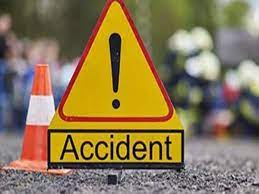The largest number of “Lakhpati Didis” are in Andhra Pradesh; Bengal and Bihar are next
NEW DELHI: According to data from the Ministry of Rural Development, Andhra Pradesh leads with over 13.65 lakh “Lakhpati Didis,” or women who belong to Self-Help Groups and earn at least Rs 1 lakh annually. Bihar and West Bengal follow with 1.16 lakh and 10.11 lakh of these women, respectively.

Lakshadweep is the state and union territory with the fewest “Lakhpati Didis”—there are now none—followed by Andaman & Nicobar Islands (242) and Goa (206).
The “Lakhpati Didi” programme was introduced in response to Prime Minister Narendra Modi’s declaration on Independence Day of last year that he wished to create two crore “Lakhpati Didis” in the nation’s communities. The government raised the goal to 3 crore in the budget address. The program being carried out under the Deendayal Antyodaya Yojana-National Rural Livelihood Mission has a three-year period as its aim. It entails helping women get training, bank and credit connections, business finance, and other resources so they may work in both the agricultural and non-farm sectors and make a steady yearly income of Rs 1 lakh.
The government’s goal of “women led development” is mostly being driven by the over 10 crore families that were organized into Self-Help Groups (SHGs), according to Minister of Rural Development Giriraj Singh.
Data for a few other states shows that a large state like Uttar Pradesh has 6.68 lakh “Lakhpati Didis,” while the figures for Gujarat, Tamil Nadu, and Kerala are 4.94 lakh, 2.64 lakh, and 2.31 lakh, respectively. It is 8..99 lakh in Maharashtra, 2.02 lakh in Rajasthan, and 9.54 lakh in places like Madhya Pradesh.
Interestingly, J&K has 29,070 women in this category, but Ladakh, a tiny union region, has 51,723 “Lakhpati Didis.” Assam leads the northeast with 4.65 lakh women, followed by Nagaland (10,494), Meghalaya (33,856), Mizoram (16087), and Manipur (12499).
Singh highlighted the handholding methods as the reason for the notable decrease in Non Performing Assets for Self-Help Groups (SHGs) over the last ten years. He identified the “Business Correspondent Sakhis” as a crucial intermediary between women SHG members at the grassroots level. Currently, SHG members designated as “BC Sakhis” assist rural women affiliated with SHGs with banking transactions.
According to ministry statistics, SHGs have obtained bank loans of around Rs 6.96 lakh billion between 2013 and 2014. SHG NPAs decreased to 1.8% in 2014 from 9.58%.
The ministry intends to increase handholding to bring more women into the fold of the ambitious “Lakhpati Didi” initiative by expanding the network of “BC Sakhis” (1.22 lakh) and assigning one for each of the nation’s more than 2.7 lakh gram panchayats. The highest number of BC sakhis (42666) is found in Uttar Pradesh, followed by Madhya Pradesh (10850) and Rajasthan (10559).
at addition, the government intends to designate more women from Self-Help Groups (SHGs) as “bank sakhis,” who work at a bank branch to assist recipients with paperwork and loan processing. Currently, there are more than 46000 of them working with 56764 banks.







